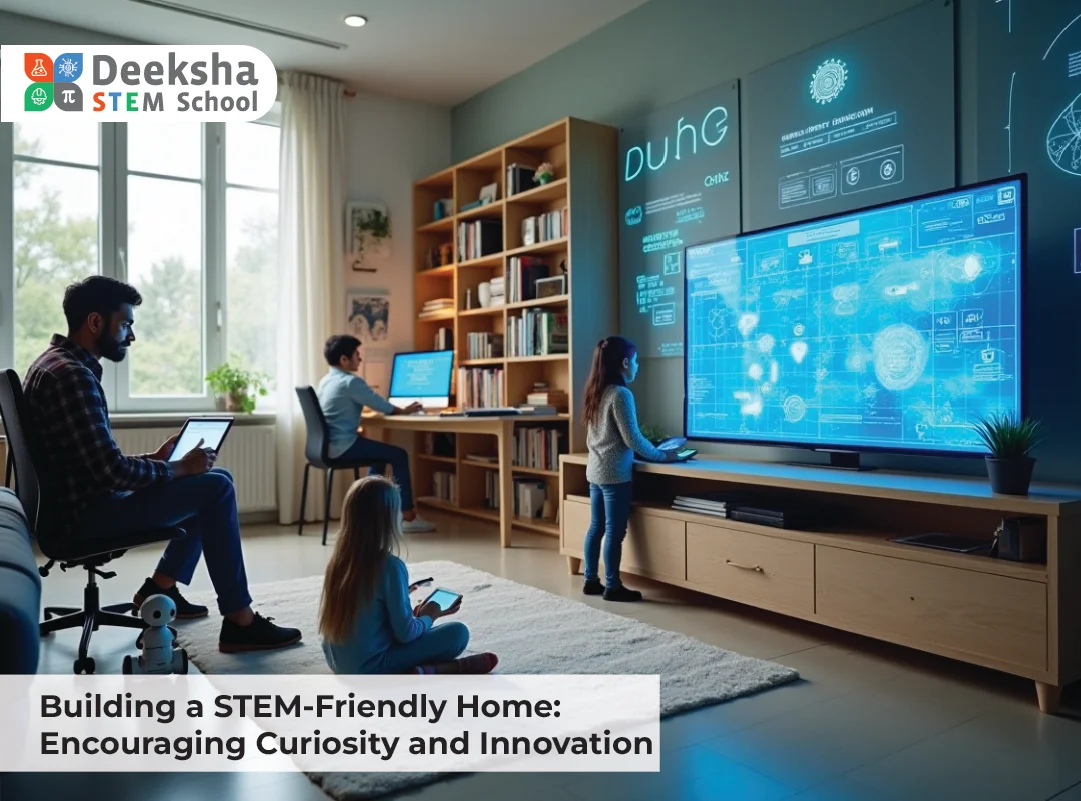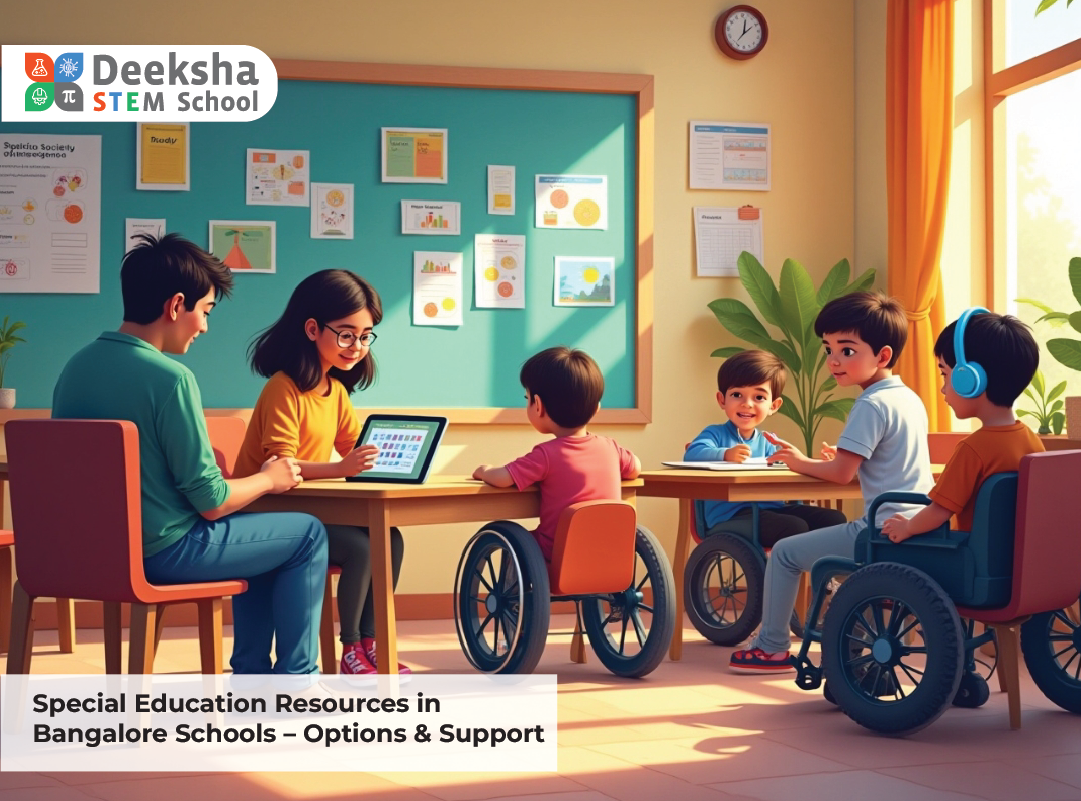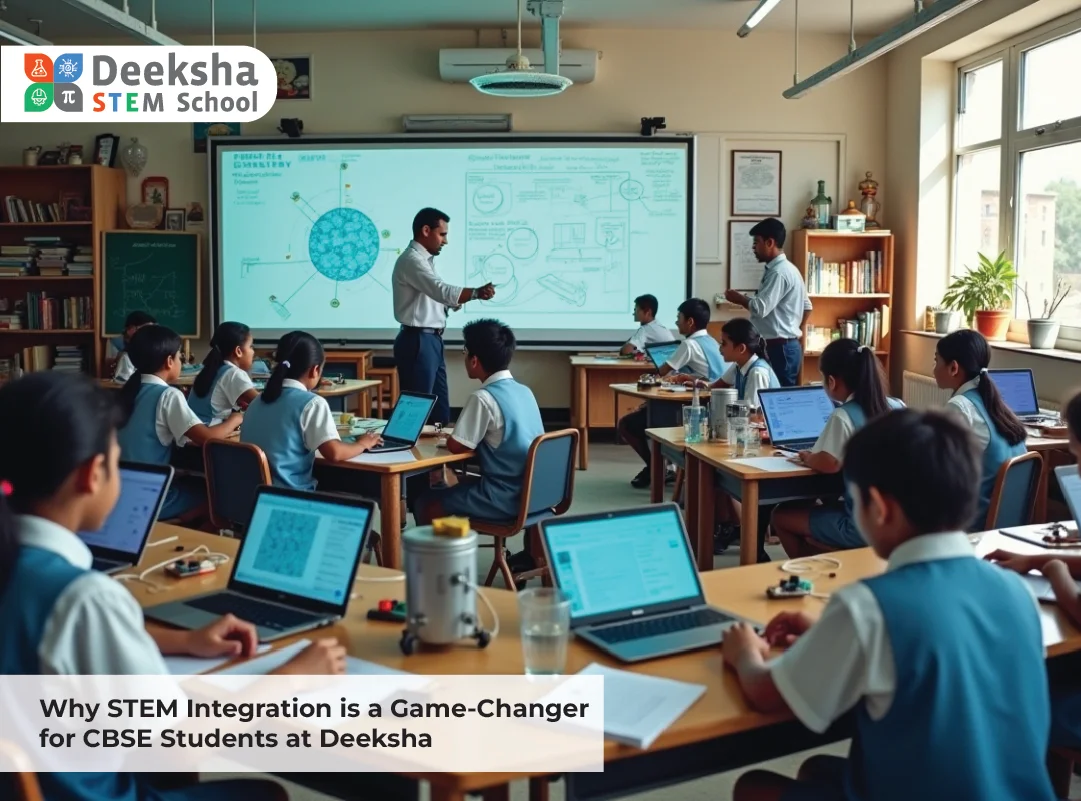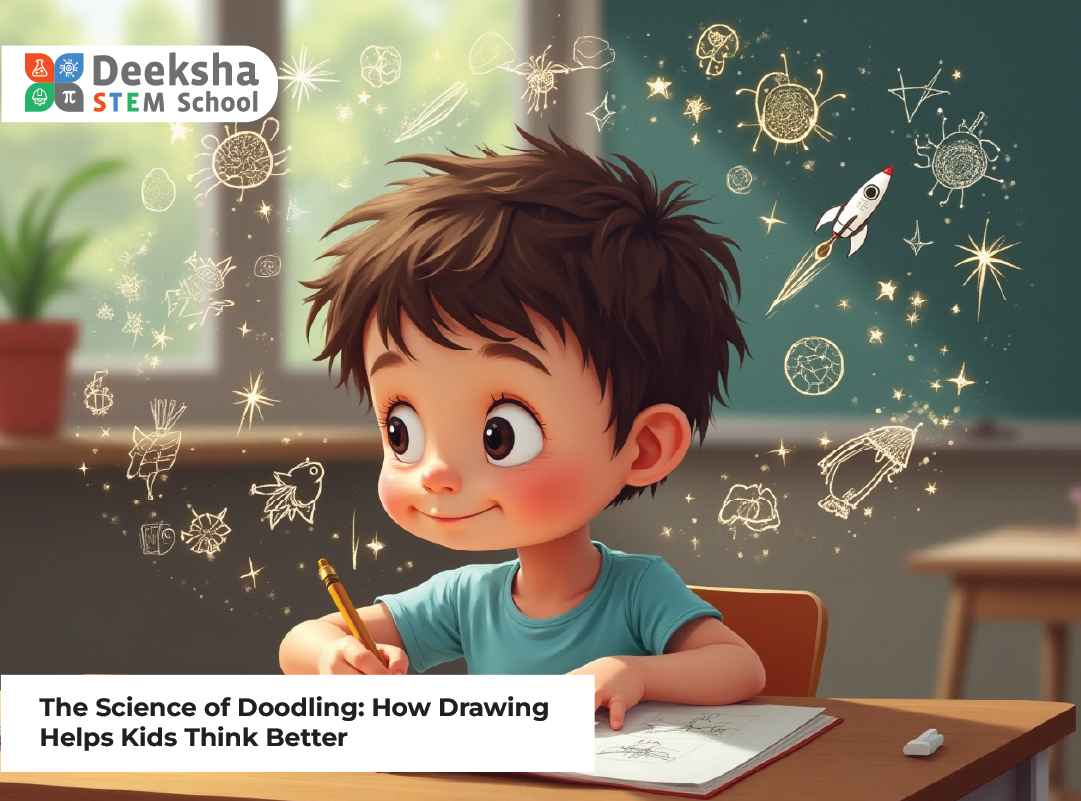Building a STEM-Friendly Home: Encouraging Curiosity and Innovation

Creating a STEM-friendly home environment is an effective way to nurture your child’s natural curiosity and inspire innovation. By integrating science, technology, engineering, and mathematics into daily activities, parents can foster critical thinking, creativity, and problem-solving skills. Here are actionable steps to design a home that encourages hands-on learning and exploration, laying the foundation for future success.
Designating a STEM Space
Create a Dedicated Area for Exploration
- Set up a STEM corner or workspace equipped with essential tools like a whiteboard, markers, and storage for materials. This space serves as a hub for experiments, projects, and brainstorming sessions, giving your child a focused area to explore their ideas.
- Include shelves or bins to organize items like building blocks, craft supplies, small electronics, and science kits. Label each bin to make it easy for children to find what they need and put items back after use, fostering both organization and independence.
- Consider decorating the space with inspiring posters, charts, or infographics related to STEM topics, such as the periodic table, famous inventors, or space exploration facts. Visual cues can spark curiosity and encourage questions.
Incorporate Technology and Tools
- Equip the space with age-appropriate technology such as a tablet, laptop, or basic coding tools. Introduce software or apps that are designed for educational purposes, such as digital drawing tools for design projects or simulation programs for science experiments.
- For advanced learners, add programmable robotics kits or a 3D printer to enable hands-on creation of prototypes and models. These tools not only teach technical skills but also inspire creativity and problem-solving.
- Provide resources like magnifying glasses, microscopes, and basic lab equipment to encourage hands-on scientific exploration. Include notebooks and journals for children to document their experiments, observations, and ideas, helping them develop analytical and communication skills.
- Ensure the space is well-lit and comfortable, with ample room for spreading out projects. A large table or workbench can serve as the centerpiece for assembling models, conducting experiments, or programming devices.
Create a Flexible Setup
- Design the space to be adaptable, allowing it to grow with your child’s interests and skill levels. For instance, as your child’s focus shifts from basic building blocks to more advanced electronics, the workspace can evolve to accommodate new tools and resources.
- Include a pinboard or display area where your child can showcase their completed projects. Celebrating their accomplishments reinforces their enthusiasm and motivates them to take on more challenges.
Encouraging Curiosity Through Daily Activities
Foster Question-Based Learning
- Encourage your child to ask questions about the world around them. For example:
- “Why does it rain?” can lead to discussions about the water cycle, exploring concepts like evaporation, condensation, and precipitation. This can be supplemented with simple experiments, such as creating condensation in a sealed container.
- “How do plants grow?” can inspire a small gardening project where children plant seeds, observe their growth under different conditions, and learn about photosynthesis and the role of sunlight and water.
- Engage in open-ended discussions that prompt critical thinking. For example, ask your child, “What do you think would happen if there were no clouds?” or “Why do some plants grow faster than others?”
Integrate STEM into Daily Routines
- Cooking as a STEM Activity:
- Use cooking as an opportunity to explore measurements, chemical reactions, and temperatures. Discuss how heat transforms raw ingredients, like how eggs coagulate or how baking soda helps dough rise.
- Introduce fractions and conversions by doubling a recipe or halving it, teaching practical math skills in a fun context.
- Mathematics in Grocery Shopping:
- Transform grocery shopping into a math lesson by teaching budgeting, price comparisons, and percentage discounts. Challenge your child to calculate the cost of items before reaching the checkout or find the best deal by comparing unit prices.
- Discuss the concept of supply and demand by observing seasonal price changes in fruits and vegetables.
- Nature Walks and Outdoor Exploration:
- Take nature walks to observe ecosystems, biodiversity, and natural patterns. Encourage your child to document what they see, such as different types of leaves, insects, or bird behaviors, and discuss how they interact in their environment.
- Use a magnifying glass to study small details in plants or insects, sparking discussions about their structure and functions.
- Create a scavenger hunt with STEM-related clues, like finding items that demonstrate symmetry, different textures, or colors.
Making STEM Part of Conversations
- Regularly discuss STEM topics during family time. For example:
- “What do you think powers the lights in our home?” can lead to discussions about electricity and renewable energy.
- “Why do ice cubes melt faster in hot water?” introduces concepts of heat transfer and energy.
- Incorporate current events or discoveries into conversations, such as advancements in space exploration or environmental conservation efforts, to connect STEM learning with real-world applications.
Hands-On STEM Activities at Home
Simple Science Experiments
- Create a Baking Soda and Vinegar Volcano:
- Combine baking soda, vinegar, and food coloring to create an erupting volcano that demonstrates chemical reactions. Encourage your child to experiment with different amounts of baking soda and vinegar to observe how the reaction changes.
- Light and Shadow Experiment:
- Use a flashlight and objects of varying shapes to study the properties of reflection and refraction. Discuss why shadows form and how light bends through water or glass.
- DIY Water Filtration System:
- Build a filtration system using layers of sand, charcoal, and pebbles. This activity teaches children about environmental science and the importance of clean water.
Engineering Challenges
- Popsicle Stick Bridges:
- Challenge your child to design and build a bridge using popsicle sticks and glue. Test its strength by gradually adding weights and discuss concepts like tension, compression, and structural stability.
- Model Airplane or Boat Construction:
- Design and construct a model airplane or boat to explore aerodynamics and buoyancy. Experiment with different designs to see which flies farthest or floats best.
- Marble Run Design:
- Create a marble run using cardboard tubes, tape, and other household materials. This activity introduces principles of gravity, speed, and momentum.
Technology and Coding Projects
- Beginner Coding Activities:
- Introduce basic coding through child-friendly platforms. Help your child create animations, stories, or simple games that align with their interests. Discuss how coding powers many of the tools they use daily.
- DIY Robotics Projects:
- Use simple robotics kits to build functional robots. Guide your child to program basic movements and tasks, such as navigating a maze or picking up objects. This combines mechanical engineering and coding.
- Digital Design and Prototyping:
- Introduce 3D modeling software for designing objects that can be printed using a 3D printer. This activity fosters creativity and teaches the basics of product design and engineering.
Encouraging Independent and Collaborative Learning
Promote Self-Directed Projects
- Allow your child to choose their own STEM projects based on their interests, such as building a solar-powered car, designing an eco-friendly home model, or creating a weather monitoring system. Encourage brainstorming sessions where your child can outline their project ideas and set achievable goals.
- Provide guidance on how to structure their projects by teaching them to:
- Formulate clear hypotheses or objectives.
- Record observations and document results.
- Reflect on their findings and identify areas for improvement.
- Introduce tools like digital spreadsheets or project management apps to help them track progress and organize their work, promoting independent planning and execution.
Collaborate as a Family
- Work on family STEM projects to combine fun with learning. Examples include:
- Rainwater Harvesting System: Collaboratively design a system to collect and store rainwater. Discuss how this promotes water conservation and test its efficiency using household materials.
- Backyard Gardening with STEM Principles: Use irrigation concepts to create a garden with an automated watering system. Teach your child about plant biology and soil types while experimenting with planting arrangements.
- Host weekly family challenges to encourage teamwork and creativity. Examples include:
- Building the tallest structure using recycled materials and explaining the engineering concepts behind its stability.
- Designing a Rube Goldberg machine to perform a simple task, sparking discussions about energy transfer and mechanics.
- Encourage family members to take on different roles, such as a planner, builder, or tester, to teach collaboration and responsibility.
Cultivating a Growth Mindset
Embrace Mistakes as Learning Opportunities
- Teach your child that failure is a natural part of the learning process. When an experiment doesn’t go as planned or a project faces setbacks, guide them to analyze what went wrong and brainstorm ways to improve. For example, if a model bridge collapses under weight, discuss how adjustments to its design could enhance stability.
- Highlight examples from history where persistence paid off. Share stories of inventors like Thomas Edison, who tested thousands of materials before creating a functional light bulb, or Marie Curie, whose groundbreaking work in radioactivity required immense dedication and resilience.
- Encourage your child to document their failures alongside successes, turning these experiences into valuable lessons. A “mistake journal” can help them reflect on what they’ve learned and track their progress over time.
Celebrate Curiosity and Effort
- Praise your child’s curiosity and effort, focusing on the process rather than the outcome. For instance, if they spend hours building a robot that doesn’t function as expected, acknowledge their persistence and creativity in tackling the challenge.
- Celebrate small wins to keep them motivated. Completing a difficult coding task or successfully conducting a science experiment, no matter how simple, deserves recognition.
- Create a “Curiosity Wall” in your home where your child can post questions, ideas, or achievements. This visual representation of their efforts reinforces a positive association with learning and exploration.
- Model a growth mindset yourself. Share examples of challenges you’ve faced and how you overcame them, demonstrating that learning is a lifelong journey.
Conclusion
A STEM-friendly home provides children with the resources, encouragement, and opportunities to explore, create, and innovate. By integrating STEM principles into everyday life and fostering a growth mindset, parents can help their children develop critical skills for future success. At Deeksha STEM Schools, we believe that curiosity and innovation start at home. Together, let’s build the foundation for a brighter future.




